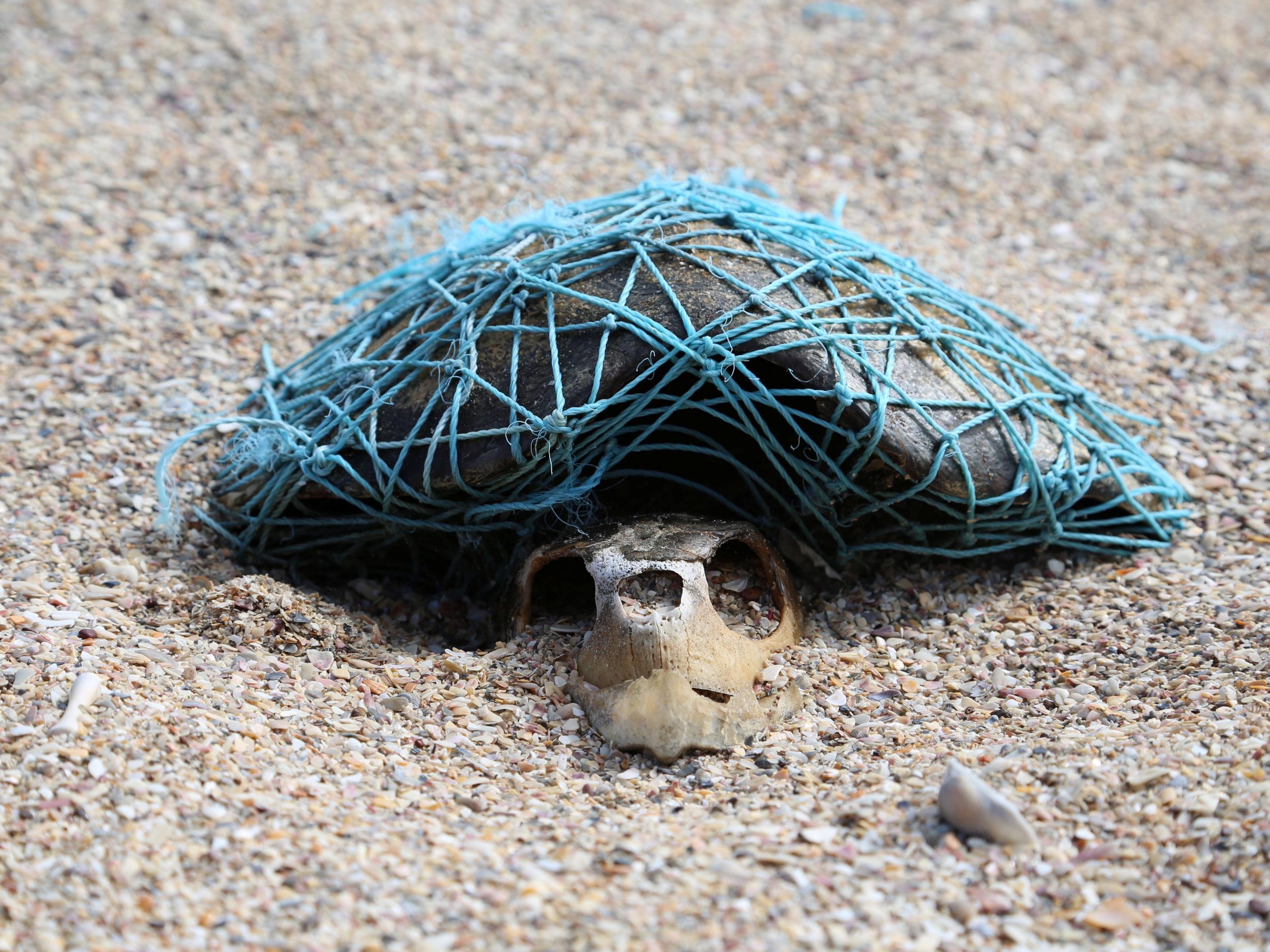'Ghost netting': Image emerges of decomposed turtle wrapped in plastic net thought to have killed it
'Over the past decade it’s thought that 10,000 turtles have been impacted by the ghost nets off northern Australia alone', say filmmakers

The body of the green sea turtle has completely decomposed but the plastic netting believed to have killed it remains intact around its empty shell months later, a recently released photograph shows.
The image was taken by a film crew making an ocean documentary while shooting on location at the Cape York Peninsular in Australia.
They released the image to raise awareness of the issue of "ghost netting".
The picture is taken from the upcoming environmental film Blue, which will be shown at the Ocean Film Festival UK & Ireland Tour.
Rosie Fuller, 36, tour coordinator, said: “These pictures show the horrific effects of plastic pollution and ghost nets on marine life and the world’s oceans.
“Blue highlights issues faced by marine life around the globe, often in wild and remote places that you would imagine are untouched by the modern world.
“The reality is very different.”
One of the images appears to show a turtle that became trapped in ghost netting before landing on a deserted beach at Cape York Peninsula in Far North Queensland, Australia.
Unable to free itself, the turtle died and decomposed on the beach with the net still firmly lodged around its shell, filmmakers believe.
“Over the past decade it’s thought that 10,000 turtles have been impacted by the ghost nets off northern Australia alone," Ms Fuller added.
“The drifting nets capture all kinds of sea life, but turtles are the most affected as they swim and feed in the currents that carry the nets.
“They have no chance once they are caught in the nets, and can drift for days before eventually drowning.”
The other two images show a river of plastic and a tide of carrier bags floating beneath the ocean's surface, both taken in Indonesia.
“Currently just under 60 per cent of seabirds have ingested plastic [and] this figure is expected to rise to 99 per cent by 2050," Ms Fuller said.
“Often a bird will be killed by its parent, which has accidentally brought plastic items to their chicks, mistaking them for food.
“Dr Jennifer Lavers, who works with seabirds on the remote Lord Howe Island in the South Pacific, explains in Blue that she has found baby birds with more than 275 pieces of plastic in their stomachs.
“If not fatal, this can cause them to be drastically underweight and undersized, with stunted wings – not a good start for their 5,000km migration.
“Half of all marine life has been lost in the last 40 years. Fish populations are in decline.
“Around one in four species of sharks, rays and skates is now threatened with extinction, due primarily to overfishing.
“By 2050 there will be more plastic in the sea than fish. There’s a plastic cesspool in our seas and it’s doubling in size every 10 years.
“The statistics are dark, but Blue shows that there is a way forward, and the time to act is now.
“All around the world people are making the decision to protect our oceans, and you can join them.”
Blue is showing as part of the Ocean Film Festival World Tour, coming to venues around the UK and Ireland this autumn.
Ocean Film Festival World Tour is committed to keeping the vent as environmentally friendly as possible.
As such, they will be working with each of the venues they visit to try and eliminate single-use plastic from the shows.
The film crew released other images which highlight the problem of plastic pollution.
Taken on remote and wild islands, each picture illustrates how areas that are untouched by mankind are still badly affected by the scourge of plastic pollution.
Ranging from Hawaii to Indonesia, beaches are covered in plastic and litter and water inlets are clogged with discarded litter.
One image shows a seal cooling off on a beach - surrounded by plastic litter that stretches as far as the eye can see.
Taken on a remote Hawaiian island, the monk seal can be seen stretching out next to discarded fishing equipment and glass bottles.
With no organised beach cleans, the litter has built up and covers what was once a tranquil and pristine beach.
SWNS
Join our commenting forum
Join thought-provoking conversations, follow other Independent readers and see their replies
Comments
Bookmark popover
Removed from bookmarks